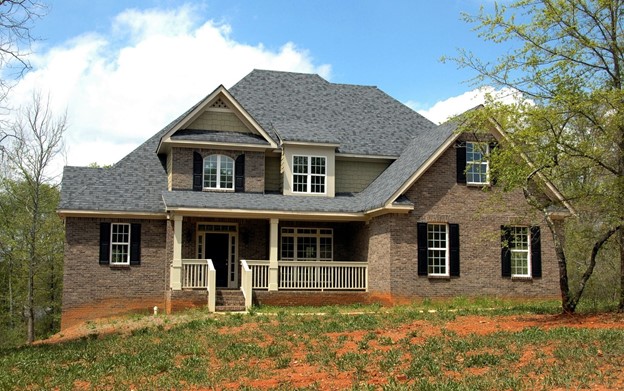When building a roof, there are of course many factors to consider. One of these factors is called the roof pitch, otherwise known as the slope of your roof. Roof pitches are notated in a ratio form, telling how many inches the roof rises per every 12 inches of depth.
An example of this would be a 8:12 pitch, meaning the roof rose 8 inches for every 12 inches toward the ridge.
Roof pitches are primarily intended to guide potentially damaging weather such as rain, ice, and snow, off of the roof and onto the ground. Without the proper pitch, these damaging elements can accumulate and cause leaking, cracks, and even the collapse of the roof itself. Different geographical areas may recommend and even require minimum pitches depending on the weather.
There are many factors one needs to consider when deciding between a low versus high pitched roof.
The first factor is cost. Because low pitched roofs typically require less building material, the overall cost tends to be lower. Building a high pitched roof may also require more experience and skill from the installers, adding another potential cost that otherwise wouldn’t be necessary. Aside from the actual construction, a high pitched roof brings the possibility of more attic space to ventilate. While all roofs and attic spaces need proper ventilation to prevent damage, the larger space as a result of a high pitch may require more expensive circulation systems.
The second factor is effectiveness. This, of course, depends on the area in which the roof is being built, but high pitched roofs are generally more efficient in draining water and keeping harmful weather off. If any debris from fallen tree branches or leaves happens to land on your roof, the low pitch would have more difficulty moving them off. In areas with little snow and ice, low pitches can be effective.
The third factor is maintenance. One can tell visually that a low pitched roof is much more walkable and accessible than a high pitched roof. If any damage were to happen, a low pitch would allow for easier fixes. On the other hand, a high pitched roof generally requires less upkeep and thus would lessen the need for regular accessibility.
The main factor to any roof is the climate of the area, and the type of weather expected. Always consider each variable of your roof to make the most informed decision.




